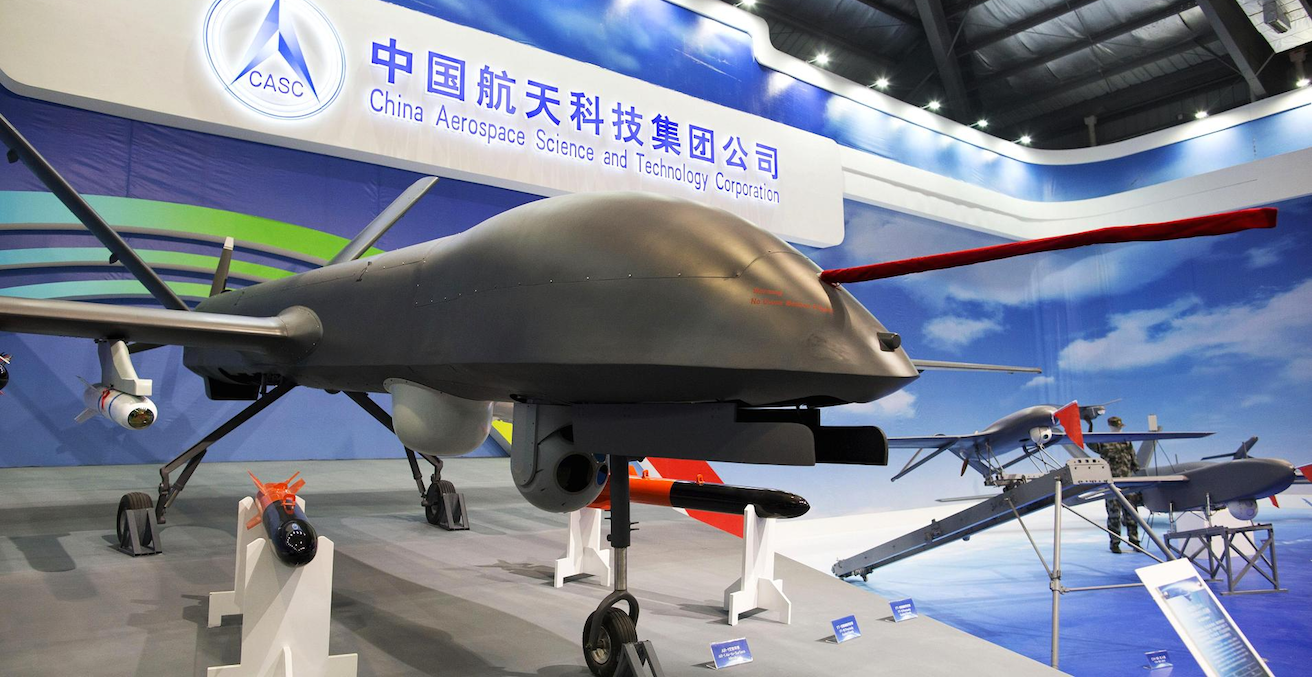China’s Game of Drones

China’s activities in Vanuatu may have attracted scrutiny this week but its investment in military artificial intelligence has received less attention. The robots may not be coming for your jobs, but they are likely to be coming to an ocean near you.
At an astounding pace, China is assuming command of the race for cutting-edge military artificial intelligence. In early February, Beijing commenced construction of the largest marine testing ground for unmanned vehicles in the world, the Zhuhai Wanshan sea test site, with a total area of 772 square kilometres. Later that month, China concluded successful bombing tests for a new class of solar-powered unmanned aerial vehicles, reportedly outperforming their American equivalents. And in March, China unveiled an unmanned tank programme, retrofitting older class Type 59 tanks with artificial intelligence capabilities to create a new force of programmable weapons at scale.
Across air, sea and land, China’s defence force boasts some of the most technologically advanced unmanned vehicles—drones—in the world. For the truly consequential news about artificial intelligence, avert your attention from Amazon’s delivery drones or Google’s AlphaGo and instead look to China.
As the examples from even the last few months illustrate, China is looking to roboticise and modernise its hardware and vehicles as quickly and radically as possible, across all branches of their military. Beijing has signposted its intent: last year, the State Council outlined a development plan to become the world leader in artificial intelligence by 2030. That plan was bullish about spending billions of dollars in military-oriented investments, building towards new Chinese capabilities for “contactless combat”: conducting war with intelligent, unmanned weapons.
The incentives to develop artificial intelligence in the military are becoming overwhelming as technology improves. Artificially intelligent drones that are able to operate semi-autonomously—for instance, by remote control from a military headquarters—can function in extreme environmental conditions for very long periods of time without risk of human error.
Existing semi-autonomous drones, like the US Predator drone over the skies of Afghanistan, have already upended traditional power dynamics in modern battlefields. The inexorable advance of technology will eventually bring about fully autonomous drones, with artificial intelligence able to learn and react to changes in the environment at speed. This carries formidable military advantages: drones that are able to think, react and engage of their own accord are highly likely to prevail against slower drones, let alone sluggish humans.
AI in the South China Sea
China’s embrace of artificial intelligence comes at the same time as increasingly audacious moves to assert regional dominance in the Asia-Pacific. Beijing’s record of military intensification in the South China Sea is well established, even if the reports of a military base in Vanuatu prove unfounded. The economic significance of the contested waterways, which have roughly a third of global trade pass through them each year, has proven irresistible to China despite diplomatic pushback and a 2016 ruling by an international court sitting at The Hague in 2016.
To date, the evidence suggests China is prepared to use all the military means at its disposal to dissuade coastal states like the Philippines and Vietnam from contesting the Chinese claim to the area. To name just one example, last year China publicly warned Vietnam to stop gas drilling in the China-claimed area or it would attack the bases and stop the drilling by force. Vietnam duly acquiesced. These threats contribute to one of the tensest theatres of international relations in the world.
Against a backdrop of instability, the use of drones threatens to aggravate geopolitical relations that are already fragile. The military advantages offered by artificially intelligent vehicles mean their growing presence in contested areas is inevitable. However, the deployment of sophisticated drones is likely to be perceived as more threatening than the deployment of manned vehicles by other states for two reasons. First, the use of maritime drones is perceived to put less at risk for the deploying state, meaning that state is seen as more likely to engage in more aggressive behaviour. Second, autonomous vehicles boast significantly greater stealth capabilities than manned vehicles, meaning coastal states are much less able to track their movement compared with manned vehicles or even satellites. The very threat of drones consequently poses risks to the stability of international relations.
The concerns around the deployment and use of artificially intelligent drones are compounded by a lack of any feasible recourse to international law. Technological developments often outpace the efforts of courts to regulate them, and this is especially pronounced for artificially intelligent military drones given the rate of scientific advance.
In the case of autonomous vehicles in the South China Sea, it seems likely that the Law of the Sea will not have any application at all. The Law of the Sea, the body of international law that nominally governs all maritime vehicles, explicitly references manned vehicle, precluding unmanned drones. Progress from the United Nations in even discussing artificially intelligent drones has been glacial. In those circumstances, very little threatens to slow the momentum of artificial intelligence as a force in international relations with China at the head.
In late 2017, former Google CEO Eric Schmidt warned that China threatened to overtake the United States in the race for artificial intelligence supremacy. He exhorted, “they are going to use this technology for both commercial and military objectives, with all sorts of implications.” “Trust me,” he added. “These Chinese people are good.”
Schmidt was perhaps more correct than he knew. If China continues to develop artificial intelligence expertise at the frenetic pace displayed so far, the implications for international relations and regional security in the South China Sea will be severe.
Matt Bartlett works at Simpson Grierson, a commercial law firm in New Zealand. He is a recent graduate of the University of Auckland, specialising in international law and foreign affairs.
This article is published under a Creative Commons Licence and may be republished with attribution.





